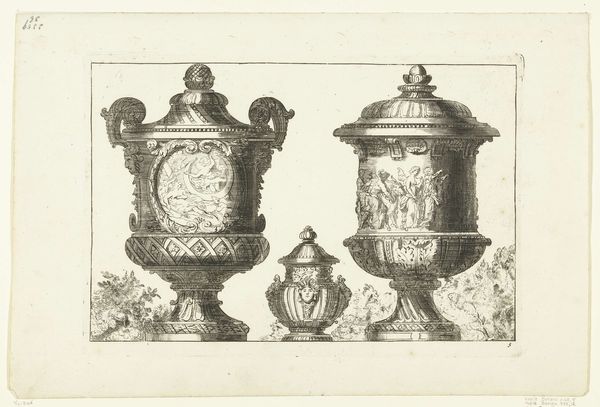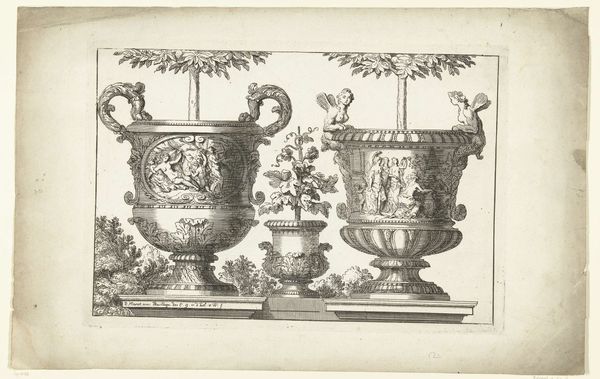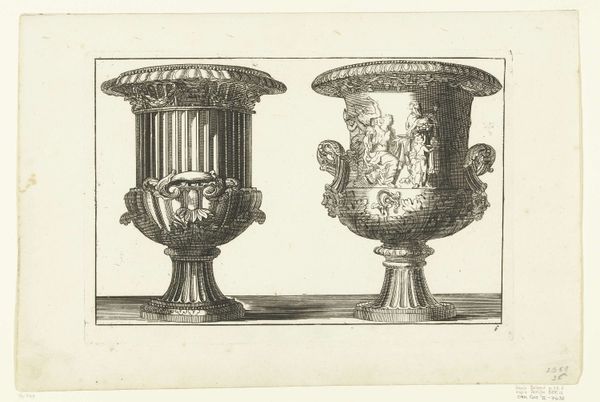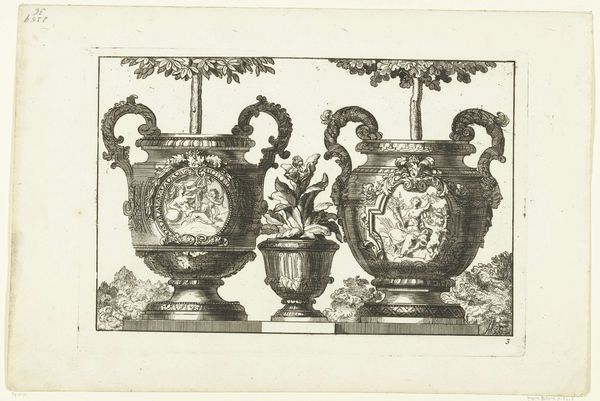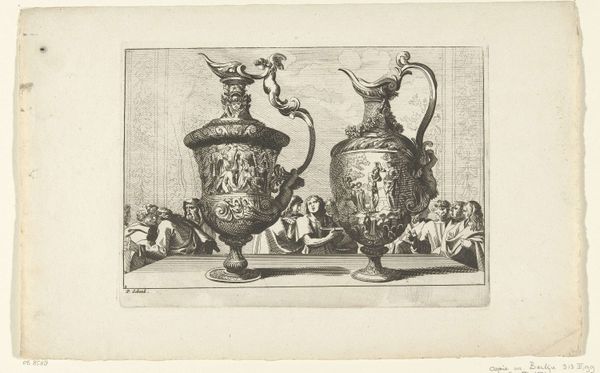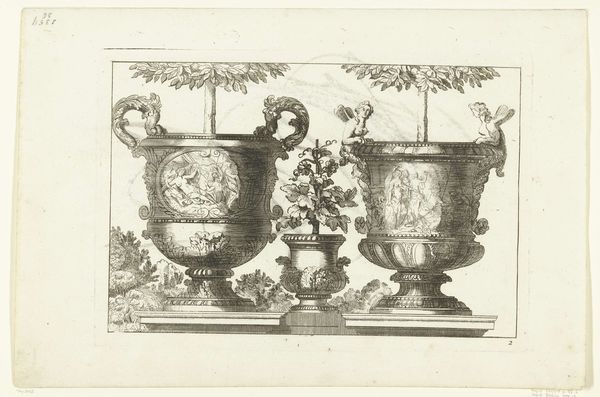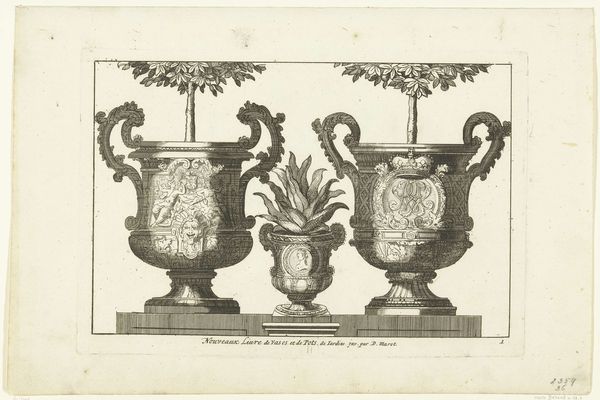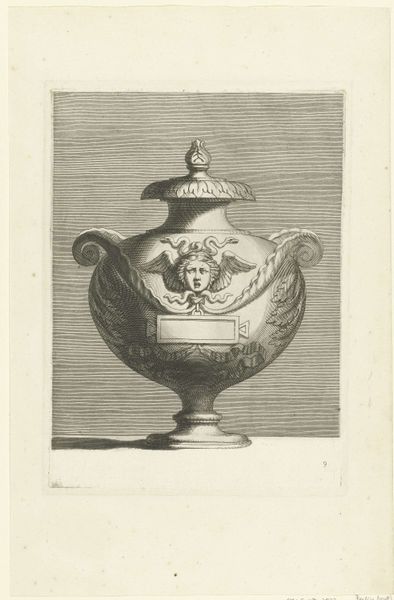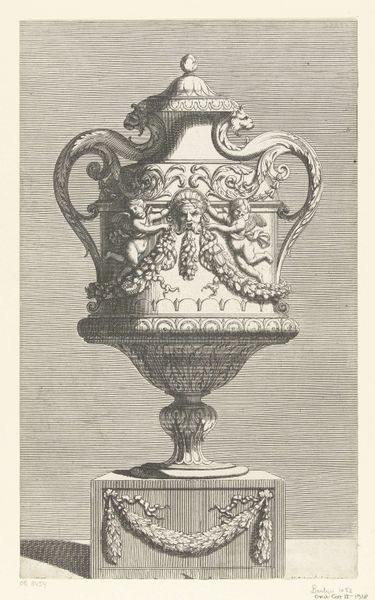
Dimensions: height 188 mm, width 275 mm
Copyright: Rijks Museum: Open Domain
Curator: At the Rijksmuseum, we have this drawing, "Two Large Urns and a Small Urn," made before 1800 by an anonymous artist, rendered through etching, engraving, pen and other drawing media. It's a strikingly austere piece. Editor: You know, "austere" is the word, isn't it? My first thought was how meticulously each line must have been placed to convey the form, the weight, the whole *thing* about urn-ness. It feels like peering into a world concerned with form itself. Curator: Absolutely. Consider the cultural context; urns in Baroque period often transcend mere functionality. They’re vessels not just for ashes, but for memory. The allegorical scenes etched on the two larger urns are fascinating little capsules of cultural mythology. Note the cherubic figures on the central, smaller urn – how do those symbols speak to you? Editor: Cherubs…well, the association is pretty immediate. Innocence, possibly grief softened. But look how small it is compared to the others, almost like childhood placed in contrast with monumental, adult experiences like, well, death and remembrance. Though all three, sitting together like that, also feel staged—consciously arranged to convey something very specific. Curator: That staged element plays beautifully into Baroque sensibilities. It's theatrical, inviting reflection on mortality but doing so with a composed elegance. The medium is just perfect—it is quite simply timeless! What sort of emotions do you associate with objects represented? Editor: Objects representing? Hmm. With these particular urns, I am left feeling that objects—even vessels intended for the finality of death—also possess an energy and narrative all their own. Like little echoes across time, all that survives from eras now passed. That line work—there’s such confidence and permanence within it. Curator: Precisely. And that echoes through the symbols themselves; how humans across centuries reconcile life and death, memory, and legacy through potent, iconic visuals. It's powerful. Editor: It truly is. Thanks for unpacking that for me.
Comments
No comments
Be the first to comment and join the conversation on the ultimate creative platform.
